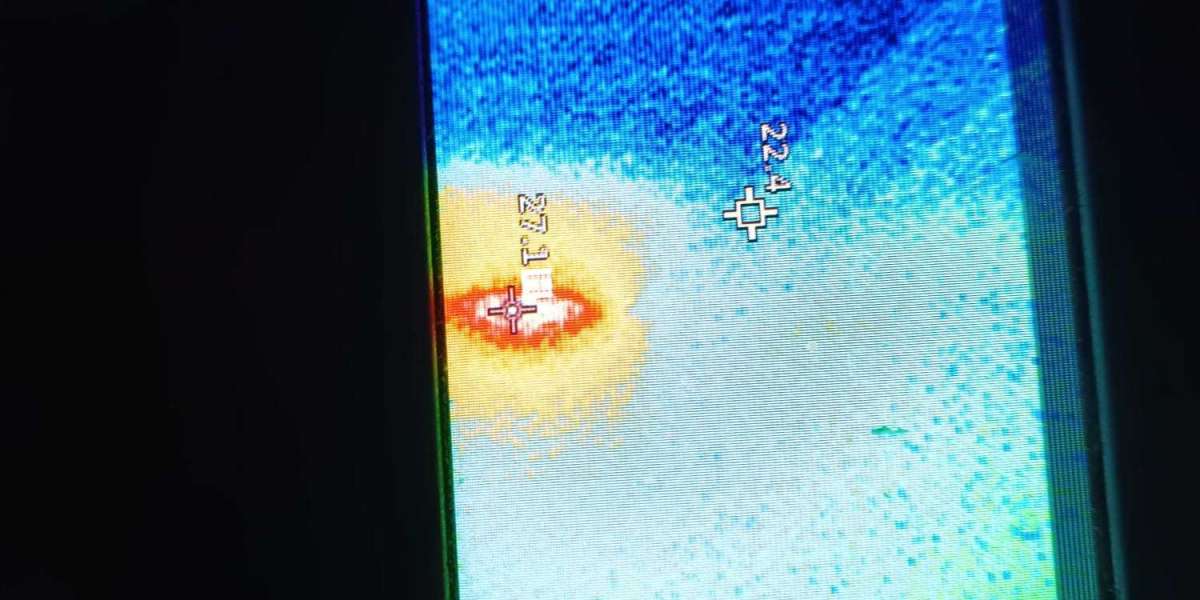Eosinophilic Esophagitis (EoE) Drug Market
The global eosinophilic esophagitis (EoE) drug market is poised for substantial growth over the coming years, fueled by rising prevalence of the disease, growing awareness among patients and healthcare providers, and promising advancements in targeted biologic therapies. With more pharmaceutical players entering the specialty gastrointestinal (GI) drug space, the market is evolving rapidly.
The global eosinophilic esophagitis drug market was valued at USD 115.3 million in 2020 and is expected to grow at a CAGR of 6.5% during the forecast period. The expansion is being propelled by increasing diagnosis rates, improvements in endoscopic techniques, and enhanced insurance coverage for chronic inflammatory GI disorders.
Market Overview
Eosinophilic esophagitis (EoE) is a chronic immune-mediated esophageal condition characterized by eosinophil infiltration, leading to esophageal dysfunction, swallowing difficulties, and food impaction. Although once considered rare, EoE is now increasingly recognized, particularly in Western countries, with both pediatric and adult populations affected.
Until recently, treatment options for EoE were limited to off-label use of corticosteroids or dietary modifications. However, recent FDA approvals of targeted biologics for eosinophilic disorders have opened new therapeutic avenues. Drug development in the EoE space is now witnessing a shift from symptomatic management to precision-targeted therapies that modify disease pathways such as IL-5, IL-13, and eotaxin-3.
The market encompasses several drug classes, including proton pump inhibitors (PPIs), swallowed topical corticosteroids, dietary therapies, and emerging biologics.
Market Segmentation
By Drug Class
Proton Pump Inhibitors (PPIs)
Common first-line therapy for EoE, used to rule out PPI-responsive esophageal eosinophilia.
Topical Corticosteroids
Includes swallowed formulations of budesonide and fluticasone; widely prescribed due to their anti-inflammatory properties and improved safety profiles.
Biologic Therapies
This segment is projected to witness the fastest growth, driven by recent approvals such as dupilumab, and investigational therapies targeting interleukin pathways.
Dietary Management Adjuncts
Includes amino acid-based formulas and elemental diets, commonly used in pediatric cases or refractory patients.
By Route of Administration
Oral
Dominant segment due to the prevalence of oral corticosteroids and PPIs.
Parenteral
Includes injectable biologics, with this segment expected to grow fastest due to innovation in monoclonal antibody therapies.
By Patient Demographic
Pediatric
Increasing diagnoses among children due to heightened screening and awareness.
Adult
A larger share of the market owing to high demand for chronic care and greater biologics usage.
By Distribution Channel
Hospital Pharmacies
Retail Pharmacies
Online Pharmacies
Retail pharmacies account for the largest share due to ease of access, but specialty pharmacies are growing in importance due to the complexity of biologic storage and administration.
Browse Full Insights:https://www.polarismarketresearch.com/industry-analysis/eosinophilic-esophagitis-drug-market
Regional Analysis
North America
North America holds the largest share of the global EoE drug market, accounting for over 45% of total revenue in 2024. The U.S. leads the way with well-established healthcare infrastructure, higher rates of diagnosis, and fast-tracked drug approvals by the FDA. The approval of dupilumab (Dupixent) for EoE in 2022 has significantly changed treatment dynamics in the region.
Insurance coverage for biologics and increased awareness through advocacy groups such as the American Partnership for Eosinophilic Disorders (APFED) contribute to strong growth.
Europe
Europe is the second-largest market, with countries like Germany, the UK, and France leading in terms of diagnosis and treatment accessibility. EMA approvals and inclusion of biologics in national formularies are expected to drive further growth. Increased collaboration between research institutions and pharmaceutical companies is also notable.
Asia-Pacific
The Asia-Pacific region is expected to witness the fastest CAGR due to growing awareness, improving healthcare infrastructure, and rising healthcare expenditure in countries such as Japan, China, and South Korea. However, limited diagnosis and low disease awareness currently restrain full market potential.
Latin America
Moderate market growth is anticipated in Latin America, driven by improvements in diagnostic tools and medical training. Brazil and Mexico are key contributors. However, biologic therapy adoption remains limited due to high costs and limited insurance coverage.
Middle East & Africa
The MEA region remains nascent in terms of market share but is gradually opening up due to international awareness campaigns and increased accessibility to specialty care in urban areas.
Key Market Drivers
1. Rising Disease Prevalence and Awareness
The increasing global incidence of EoE, especially in Western countries, is a key driver. Enhanced physician education and improved endoscopic biopsy techniques are contributing to early and accurate diagnosis.
2. Biologic Therapy Advancements
Breakthroughs in interleukin-5 and interleukin-13 inhibitors are revolutionizing the treatment paradigm. Biologics offer targeted, long-term control with fewer systemic side effects, thereby improving patient compliance and outcomes.
3. Supportive Regulatory Environment
Fast-track designations, orphan drug status, and favorable reimbursement scenarios in the U.S. and Europe are enabling faster development and commercialization of new drugs for rare eosinophilic diseases.
4. Pediatric Drug Development Incentives
With a growing pediatric population affected by EoE, governments and health organizations are promoting child-friendly formulations and dosing studies, further encouraging innovation.
Market Challenges
1. High Cost of Biologic Therapies
One of the main limitations in market penetration for newer therapies is the high cost of biologics, which may restrict access in low- and middle-income countries.
2. Underdiagnosis in Emerging Markets
Despite increasing awareness, underdiagnosis remains a critical issue, especially in Asia and Africa. Lack of specialist access and awareness among general practitioners hinders early treatment.
3. Limited Treatment Guidelines
Standardized treatment protocols for EoE remain underdeveloped in many regions, causing inconsistencies in clinical practice and affecting adoption of newer therapies.
4. Side Effects of Long-Term Steroid Use
Topical corticosteroids, while effective, may lead to esophageal candidiasis or adrenal suppression with long-term use. This has sparked interest in alternative treatment modalities.
Key Companies
1. Sanofi & Regeneron Pharmaceuticals
The launch of Dupixent (dupilumab) has been a game-changer. Originally approved for asthma and atopic dermatitis, the drug received FDA approval for EoE in 2022, marking the first approved biologic for this indication.
2. Takeda Pharmaceuticals
Takeda is actively engaged in late-stage trials for biologics targeting IL-13 and TSLP pathways. Their research and development efforts are expected to introduce more novel therapies in the coming years.
3. AstraZeneca
Known for its work in immunology, AstraZeneca is exploring potential crossover applications of its biologic portfolio for EoE and other eosinophilic GI disorders.
4. GlaxoSmithKline (GSK)
GSK is investing in monoclonal antibodies that can potentially be used to treat eosinophilic conditions, including EoE. Their pipeline includes agents targeting IL-5 pathways.
5. Dr. Falk Pharma
A leader in GI-focused therapies, particularly in Europe, Dr. Falk Pharma offers topical steroids and is involved in clinical trials for EoE-specific treatments.
6. Allakos Inc.
This clinical-stage biotech firm is known for its work on lirentelimab (AK002), a monoclonal antibody designed to inhibit Siglec-8, a receptor involved in eosinophil activation.
LSI Keywords Used:
Targeted biologics for eosinophilic disorders
Interleukin-5 and interleukin-13 inhibitors
Swallowed topical corticosteroids
Precision-targeted therapies
Conclusion
The eosinophilic esophagitis drug market is undergoing a transformative phase. With rising patient demand, biologic innovation, and stronger regulatory support, the market is set to grow steadily over the next decade. Although access and affordability remain concerns, ongoing clinical trials and pipeline developments offer hope for more effective and affordable treatment options.
As the understanding of eosinophilic diseases deepens and therapeutic strategies become more targeted, stakeholders—including pharmaceutical firms, healthcare providers, and regulators—must collaborate to ensure optimal patient outcomes in this evolving landscape.
Erectile Dysfunction Drugs Market
Durable Medical Equipment Market
Point of Care (PoC) Diagnostics Market
Next Generation Sequencing (NGS) Market








